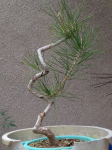bonhe
Masterpiece
Thanks Adair M for your comment.
Have you ever done the "use scissors to cut the root in where it barely escaped the 1st colander wall" process?
I only did it when I wanted to separate the 1st colander from the 2nd colander.
The reason I ask us my friends who have done the double colander thing tell me that the roots swell as they get constructed passing thru the holes of the first colander. They bulge up on both sides. The first colander won't just easily pull off.
It does not make sense at all! I never had a problem like that!
Then again, it appears you twist the first colander when it's in the larger one? Is that what you mean by rotate?
Sorry for confusion. No, I rotated the 2nd colander once in a while.
I'm being honest here, I admire your experiment, but the results are showing far less growth than I've seen others achieve in the same (or less) amount of time. Using just straight single colanders!
I appreciate your comment. It is hard to compare my method of growing with others because of different specimen. I am growing KBP and I suspect that others grow JBP. To conclude which method is better, one must use same sample to compare (talking about statistics method)! However, I have also been growing 42 four years old JBP seedlings with different grow method. I can see those JBP grows much faster (I will create a post for those JBP). I wish I could do more experiment to find out if KBP is a slow growing tree comparing to JBP.
Bonhe
Have you ever done the "use scissors to cut the root in where it barely escaped the 1st colander wall" process?
I only did it when I wanted to separate the 1st colander from the 2nd colander.
The reason I ask us my friends who have done the double colander thing tell me that the roots swell as they get constructed passing thru the holes of the first colander. They bulge up on both sides. The first colander won't just easily pull off.
It does not make sense at all! I never had a problem like that!
Then again, it appears you twist the first colander when it's in the larger one? Is that what you mean by rotate?
Sorry for confusion. No, I rotated the 2nd colander once in a while.
I'm being honest here, I admire your experiment, but the results are showing far less growth than I've seen others achieve in the same (or less) amount of time. Using just straight single colanders!
I appreciate your comment. It is hard to compare my method of growing with others because of different specimen. I am growing KBP and I suspect that others grow JBP. To conclude which method is better, one must use same sample to compare (talking about statistics method)! However, I have also been growing 42 four years old JBP seedlings with different grow method. I can see those JBP grows much faster (I will create a post for those JBP). I wish I could do more experiment to find out if KBP is a slow growing tree comparing to JBP.
Bonhe

























